Overview
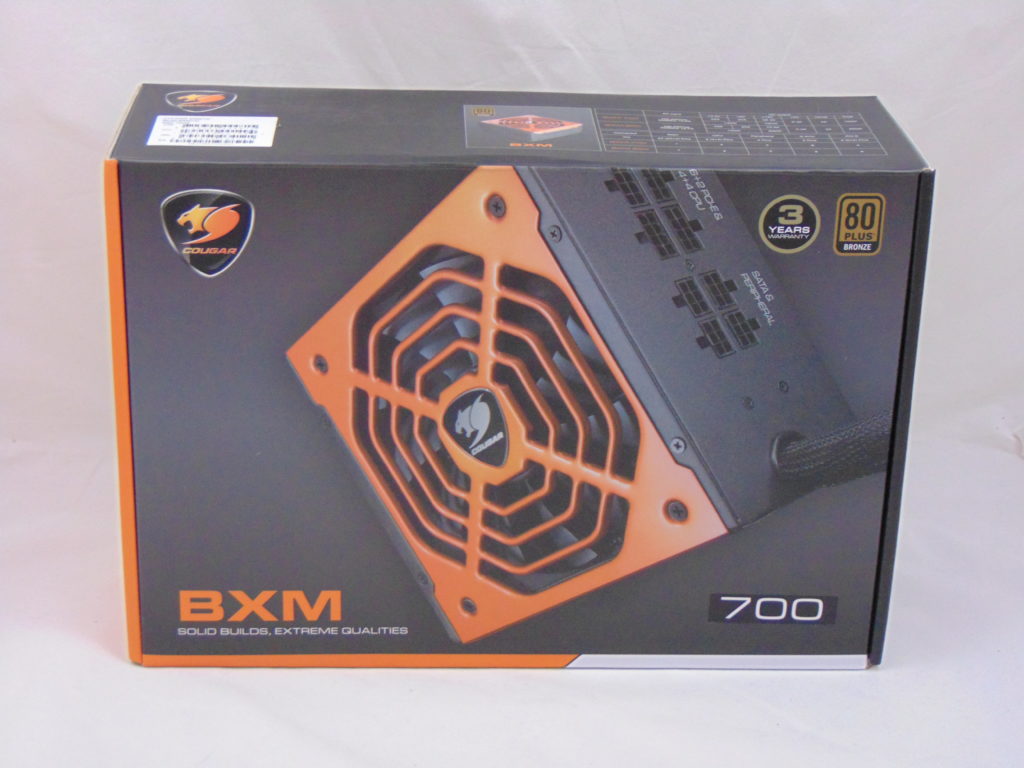
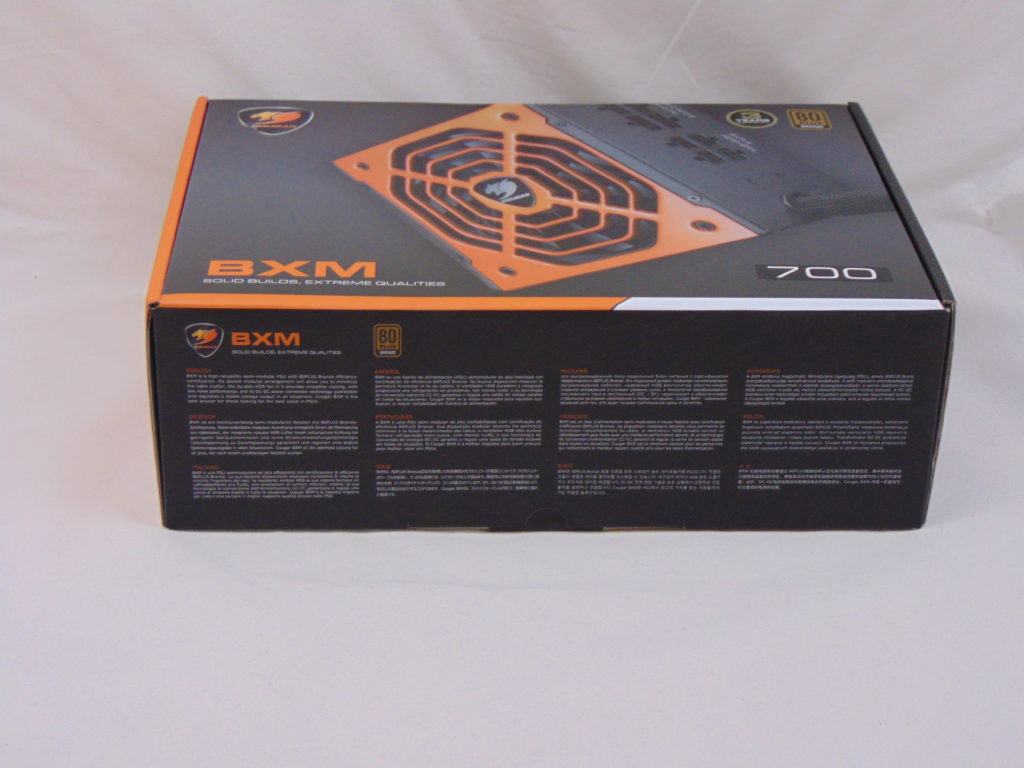
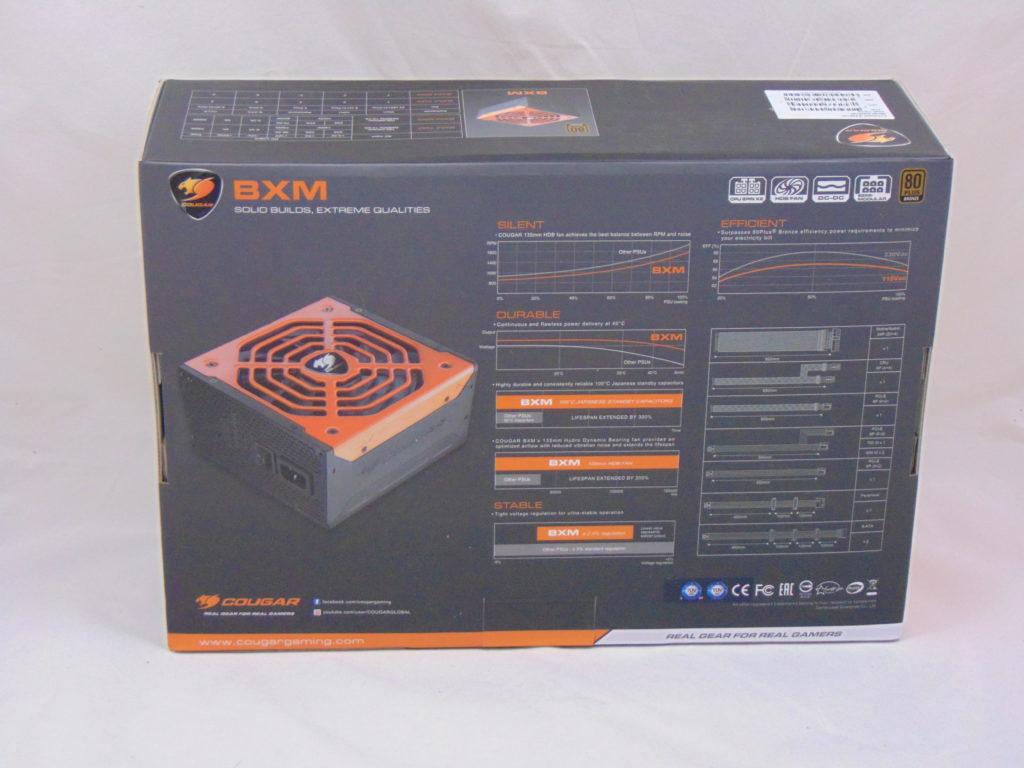
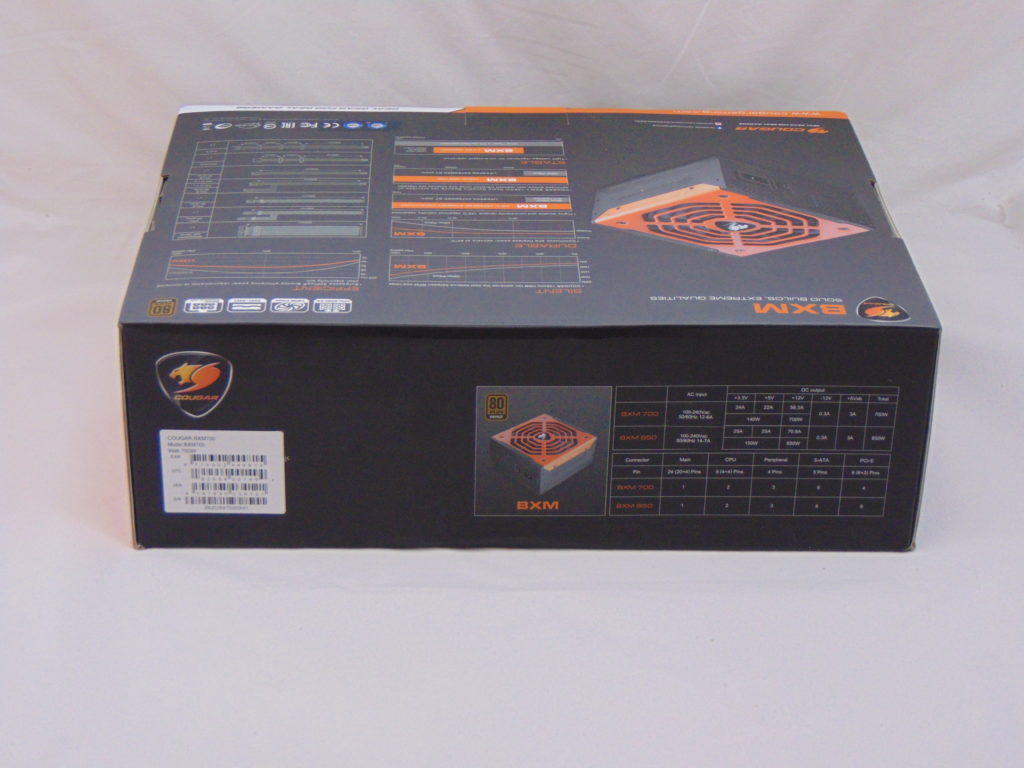
The Cougar BXM 700 packaging is trimmed out in the orangish/red, black, and silver/grey color scheme that Cougar uses along with a large picture of the included unit. The front of the package is mostly devoid of information, save for the advertising about the 3-year warranty and the 80 Plus Bronze seal. When we check the 80 Plus website we do find this unit listed so we will be seeing how this unit does in that regard a bit later on.
The rear of the packaging has a lot going on between all of the advertising and the graphs. Among the graphs, we find a fan noise graph, an efficiency graph, and a “Durable” graph (don’t ask me I don’t know either). We also find some advertising about features (including the FDB fan) and the cable lengths listed here along with the connector count (reproduced below). The side of the package has the power label (reproduced below) for this model and the 850W model listed.
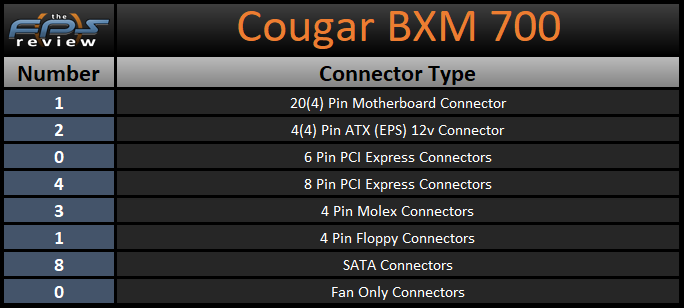
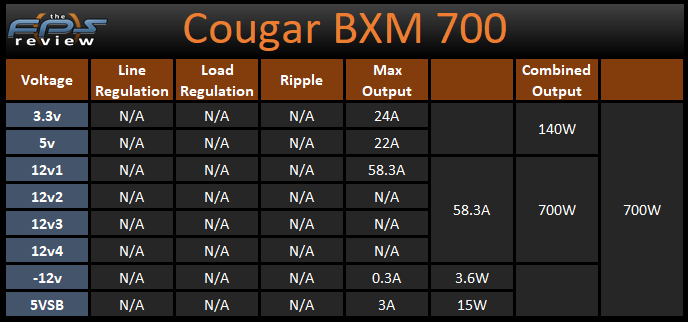
The Cougar BXM 700 is advertised as being a single 12v rail power supply with a capacity up to 58.3A (or ~99% of the unit’s capacity) if necessary. The minor rails (5v and 3.3v) have a capacity of 24A (3.3v) or 22A (5v) and the combined capacity of those two rails is 140W. Combined with these outputs, we find that this unit has 4 PCIe connectors, 8 SATA connectors, and 3 Molex connectors. The power supply features these safety features: OCP, OPP, OVP, UVP, SCP & OTP (Under Voltage Protection, Short-Circuit Protection, Over Temperature Protection, Overcurrent Protection, Over Voltage Protection, Over Power Protection).
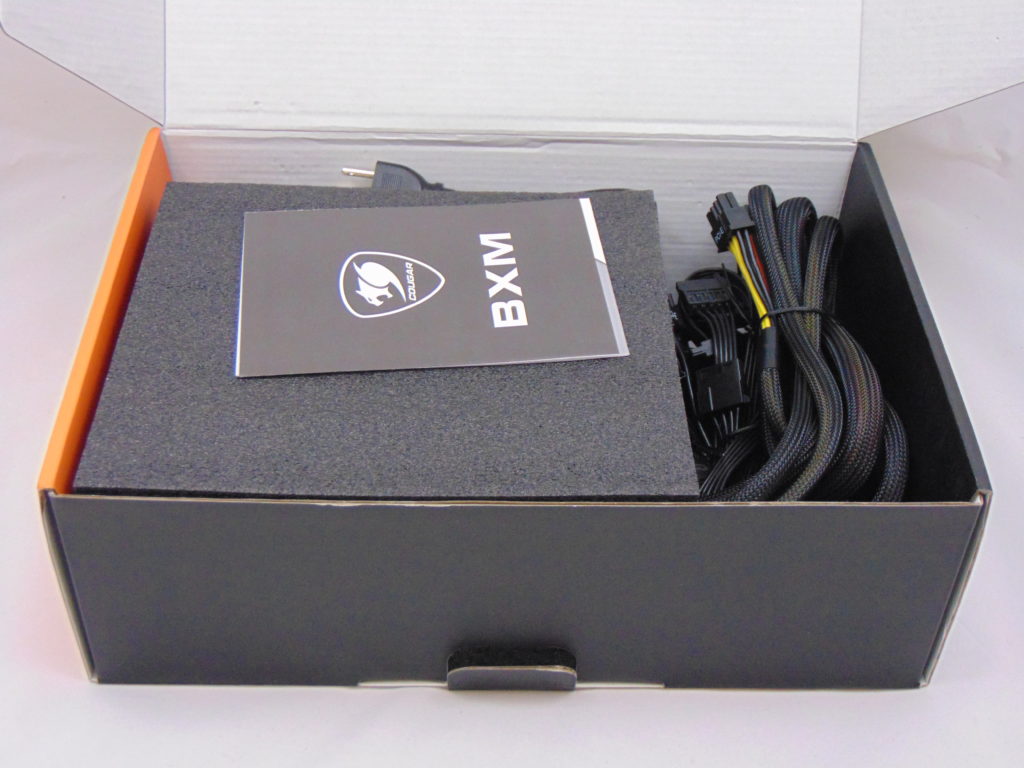
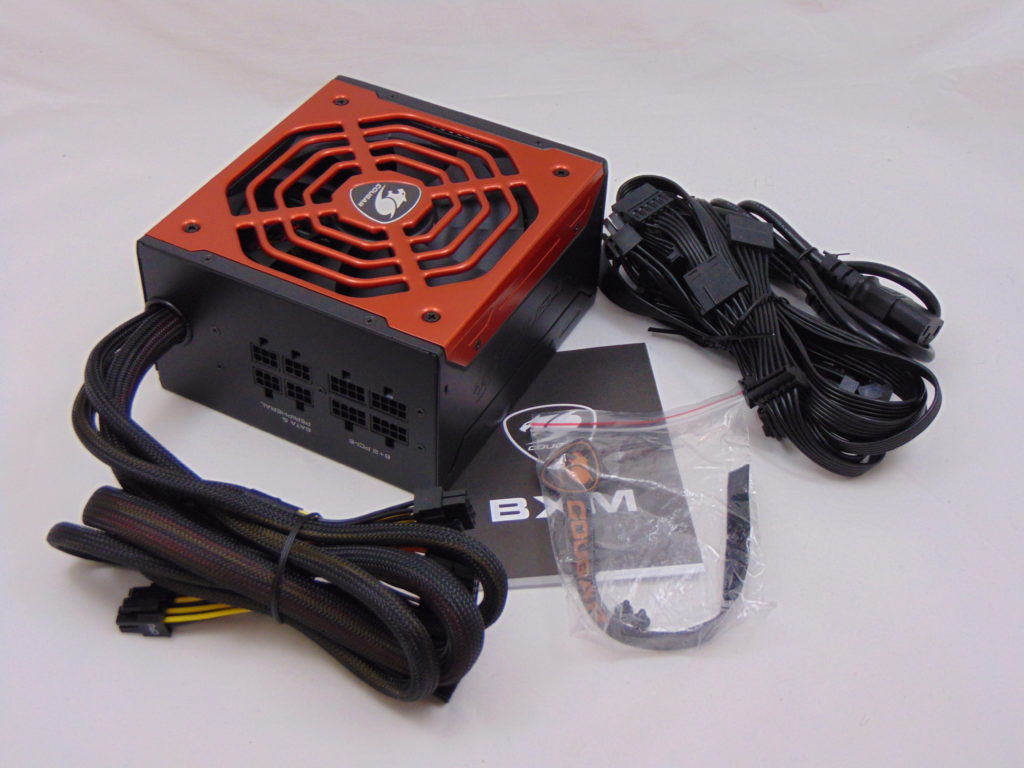
Once we open the Cougar BXM 700 packaging we find the power supply, mounting screws, modular cables, the power cord, Velcro straps, and the user manual. The user manual covers this model and the 850W model over one folded page in three languages. The documentation is on the useless spectrum and largely repeats the items already see on the packaging. Indeed, it is a waste of paper. Let’s move on to the unit itself now.
